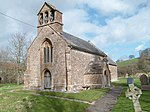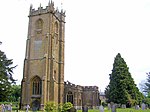Church of St Mary, Seavington St Mary

The Church of St Mary in Seavington St Mary, Somerset, England, dates from the 15th century and is recorded in the National Heritage List for England as a designated Grade II* listed building.The former Anglican parish Church of St Mary has 13th-century origins, but the current building is largely from the late 15th century, with restoration around 1880. The three-stage tower is from the 16th century, and contains six bells. Three of these date from 1621 and were made by George Purdue of Closworth; the others are from the 20th century, and were made by John Taylor & Co in Loughborough.The parish was previously held as a chapelry of South Petherton by Bruton Abbey and after the Dissolution of the Monasteries belonged to Bristol Cathedral.It is a redundant church in the care of the Churches Conservation Trust. The church was declared redundant on 1 July 1983, and was vested in the Trust on 15 May 1985.
Excerpt from the Wikipedia article Church of St Mary, Seavington St Mary (License: CC BY-SA 3.0, Authors, Images).Church of St Mary, Seavington St Mary
Church Lane,
Geographical coordinates (GPS) Address Nearby Places Show on map
Geographical coordinates (GPS)
| Latitude | Longitude |
|---|---|
| N 50.930555555556 ° | E -2.8511111111111 ° |
Address
Church Lane
TA19 0QP
England, United Kingdom
Open on Google Maps









